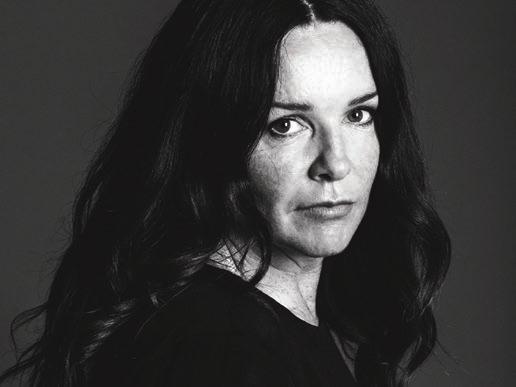
3 minute read
HOW TO MAKE HARD DAYS EASIER by Jenni Tarrant
HOW TO MAKE HARD DAYS EASIER
BY JENNI TARRANT
Advertisement
Has there ever been a time in history when one person has to deal with so many things vying for our attention as now? Surely not! Think about it: clients, team members, suppliers, sales reps, phones ringing and pinging, family, friends, endless emails (how many unread messages do you have in your many email accounts?); all your different social media, bills, appointments, creative inspiration, taxes, streaming services, events, networking, exercise… and on and on it goes.
Not only do we have all those things to contend with, more than ever we are aware that everything we do has an ‘opportunity cost’. That means when you are using your time one way, you are very aware that you could be doing something else - sometimes something else we would much prefer to be doing. Gone are the days when you focused on one thing at a time and were blissfully unaware of missing out on other things.
Don’t get me wrong - there are plenty of benefits to living with so much choice in our lives, but at times it all becomes too much, and our stress levels peak. I don’t know about you, but as I get to that level when my brain literally can’t fit another thing in and I can’t take one more interruption, I want to scream my head off and throw something! But I don’t, because I learned a trick.
Part of being really successful at anything in life is having some self-awareness: what are my strengths and what do I need to work on - that sort of thing. This tool uses self-awareness to prevent the ‘emotional hijacking’ when you want to scream, “ENOUGH” at the top of your voice.
If you think of your stress levels as a kind of thermometer where the bottom means completely relaxed, and the top means it’s time to bring out the straight-jacket, there is a scale in between. As your mood/stress/emotions go up the scale you will notice changes in the way you do things and how you think - and it isn’t good. Start paying attention to how you are feeling and how productive you can be at various periods of stress.
Put reminders in your phone during your breaks to check in and give yourself a number between 1 and 10, then note it down. Yes, another thing demanding your attention but this one will be worth it. At some point, you will see a pattern where you go from being able to cope and remain calm and then when you hit that tipping point of losing your ability to focus and solve challenges. For me, it is a 7. When I hit the 7, the success of my day depends on my ability to deal with my stress levels and I need to implement a strategy.
A strategy is a pre-organised mini-list of things I can use to go from 7 to a manageable 3 or 4 instead of taking the fast track to 10. My mini-list includes things like slowing down my breathing, or I go outside and ask myself what can I feel (breeze, heat of the sun); what can I see; what can I taste (besides coffee!); what can I hear? Everything on my list is designed to bring me back to the present instead of getting anxious about the future. CBT - Cognitive Behaviour Therapy - refers to the 1 to 10 scale as Subjective Units of Distress Scale, but let’s go with SUDS. Some time ago, I did a mini-workshop with my team and taught them about SUDS and ways to both recognise their tipping point/number out of 10 and identify their own ways of calming themselves down. It can become salon terminology: “My SUDS are up” etc. If I see a team member getting stress, I can ask them what their SUDS are and encourage them to use a strategy they had listed when they weren’t stressed.
I recommend doing this in your business and with your team. It saves the dreaded ‘big discussion’. It also solves the problem before everyone falls victim to the emotional hijacking of one team member and the negative vibe it creates in the salon. Let’s all take it down a notch or two so we can remember how to enjoy our jobs, the people we work with, and the people who come into our salons. What’s your number?










